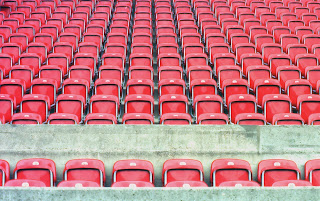No other country on the planet does college sports like the
US does. We put huge amounts of
resources into making college sports happen. We build stadiums that can hold over 114,000 people (The Big
House), which is the largest college football stadium in the nation, and one of
the largest football-only stadiums in the world. The University of Michigan football program ranks first in
NCAA history of both total wins and winning percentage. Our men’s ice hockey team has won nine
national championships, and our men’s basketball team has appeared in four
Final Fours. A lot must go into
making this all happen. At
Michigan, which is the highest level of college sports, we see an intersection
of commercialism and educational goals. As a result of this intersection, what happens to our resources
and more importantly our student athletes? Clearly we want to be the best, but
how can a university make this happen?

Michigan is a Division I FBS school. In my Sport Management class, I learned
that the business model of typical DI FBS schools is to sink their resources
into the two most commercialized sports: Football and men’s basketball. They do this with the goals of
generating enough money for the sport itself to be self-sustained and
generating enough money to fund the entire athletic program. However, the reality is that only about
70 out the 120 FBS schools break even or have a surplus, and only 22 athletic
departments were self-sufficient last year (of course both of these statistics
include Michigan). In reality,
college sports is just not a moneymaking thing for most universities. So why do universities put so much of
their resources into athletics? Is
this good for the school and the students?
As a result of this business model, there are different
expectations for student athletes. Their academic requirements: Athletes often do not have a
choice in majors. Because they
have to maintain academic progress, they typically get funneled into different
majors. How many student athlete
engineer or business students have you seen? I’m sure not many.
These athletes also usually have extensive schedules, and therefore
cannot spend as much time on their studies. They have tutors and athletic-run assistance facilities. Of course these are great resources, but
I think that this just further isolates the student athlete from the student
population.

Division I schools use their sports to entertain their
campus and a national audience.
They work to attract students, attention, and generate the dollars. The NCAA is considered an “educational
organization” because it is made up of education institutions (conferences,
organizations, etc). But is
the NCAA really promoting education?
Or is it promoting sports?
The sports industry is so caught up in promoting college
sports that they do not necessarily do what is best for the student
athletes. Of course student
athletes take regular courses, but are they getting the same education and
opportunities as regular students are?
Are they here to play their game, or are they here to receive an
education? I’m not really sure
what the answers to these questions are.
I think that the balance between commercialization and education is
extremely difficult to work with.
I give a lot of credit to student athletes at big-time universities and
I would love to know what they think.
-Brooke Kranz






















